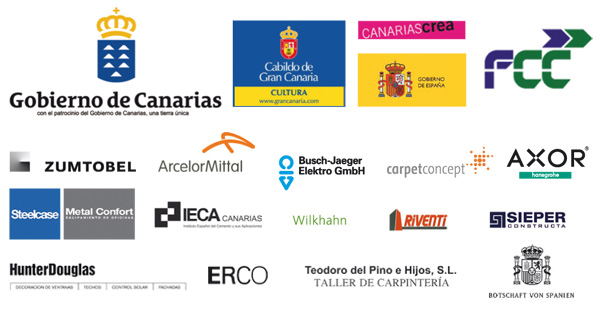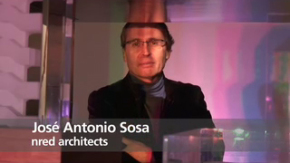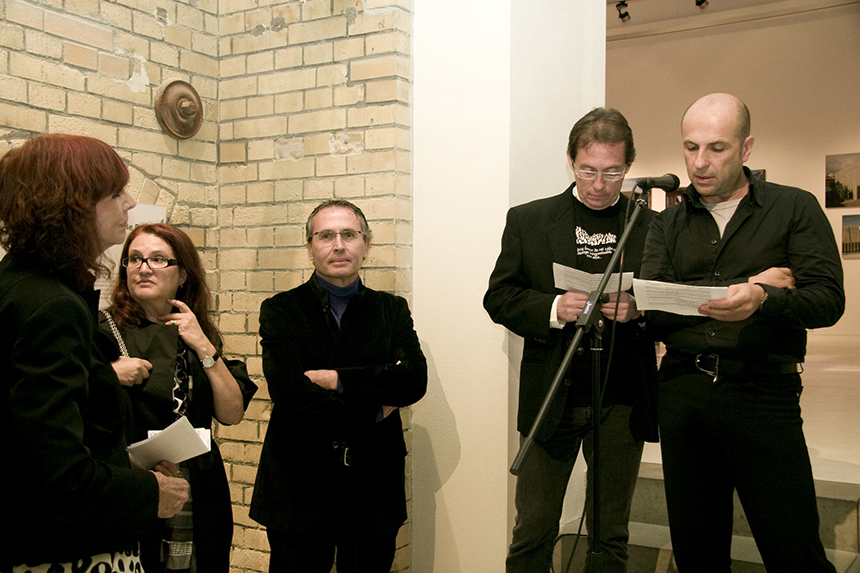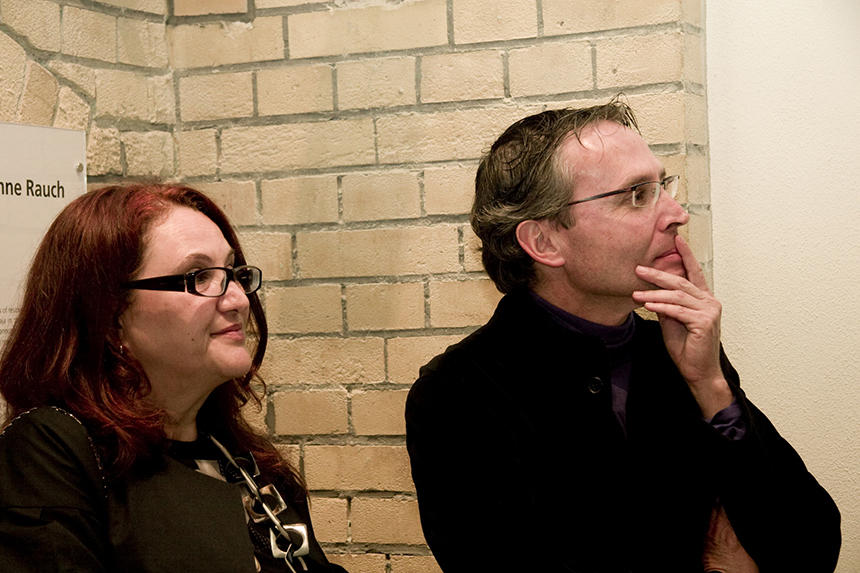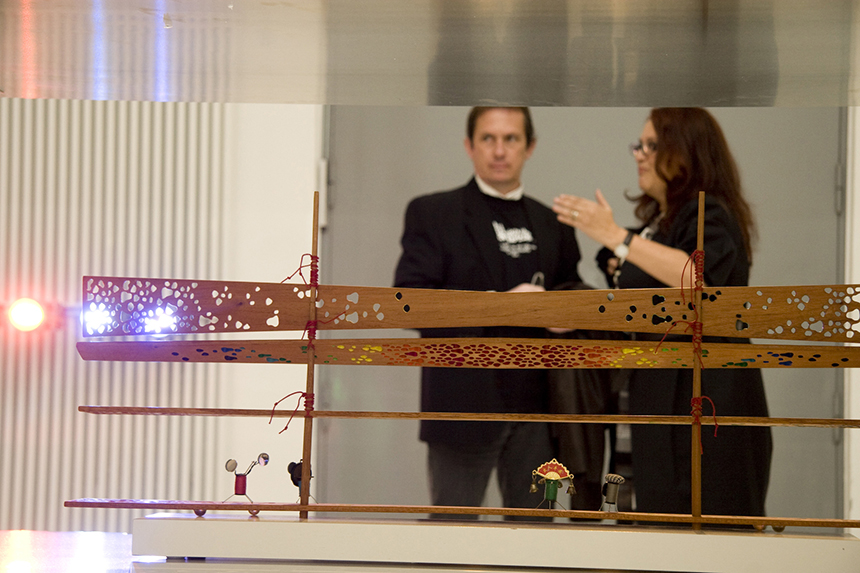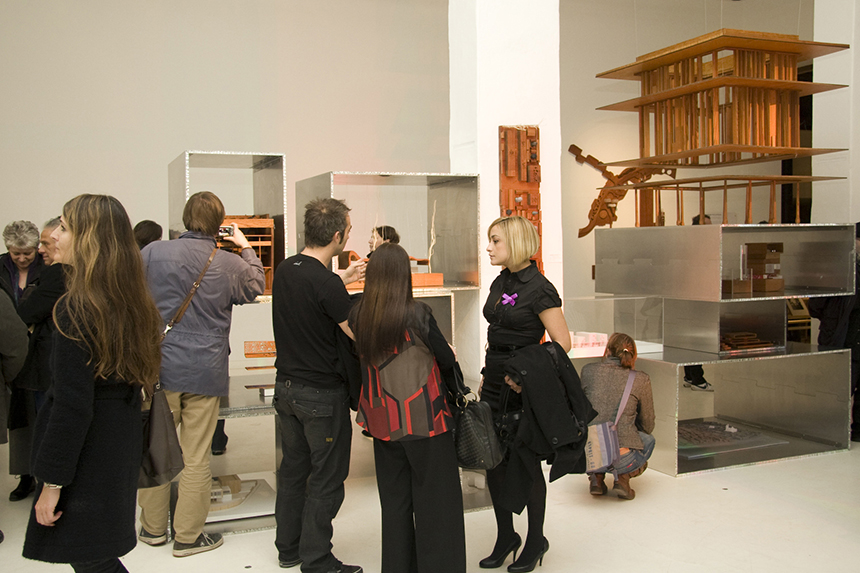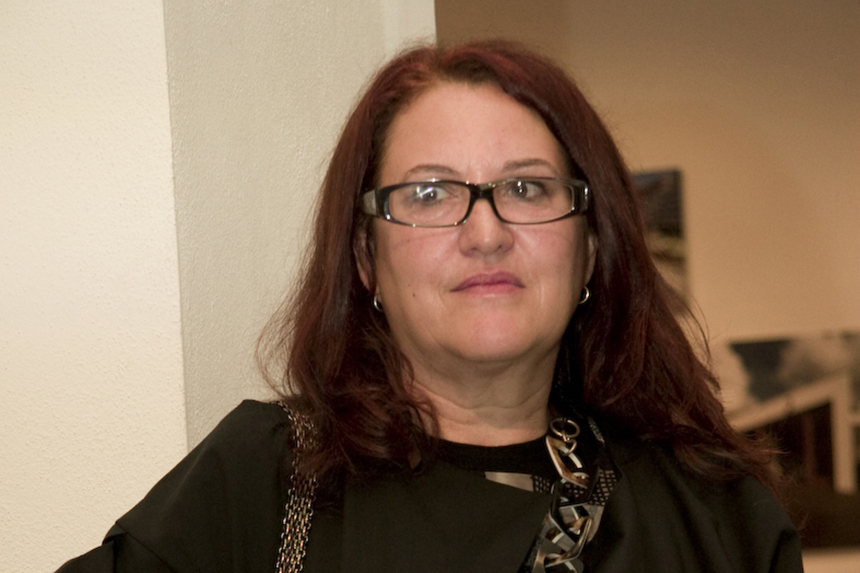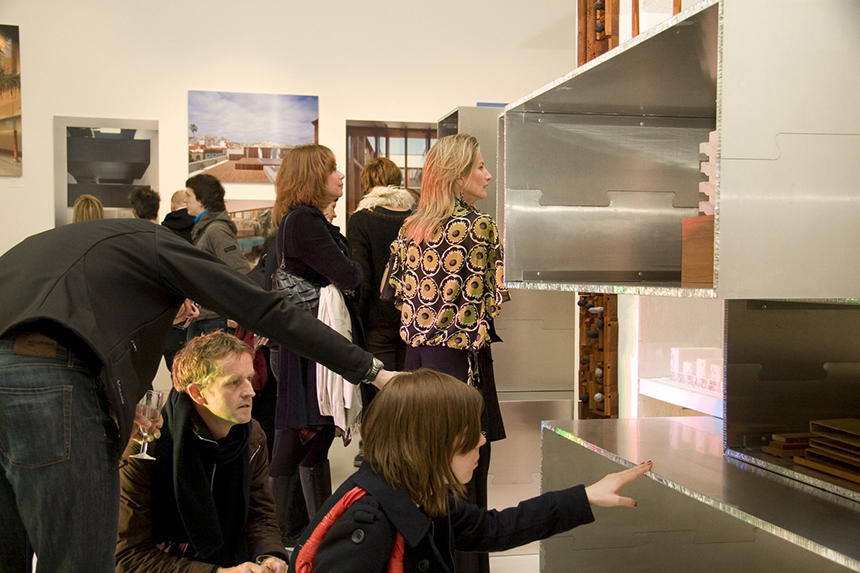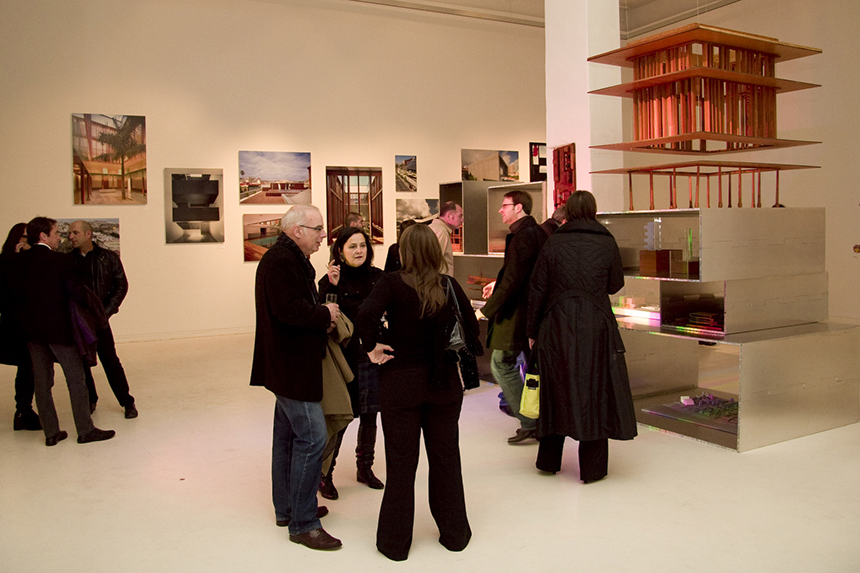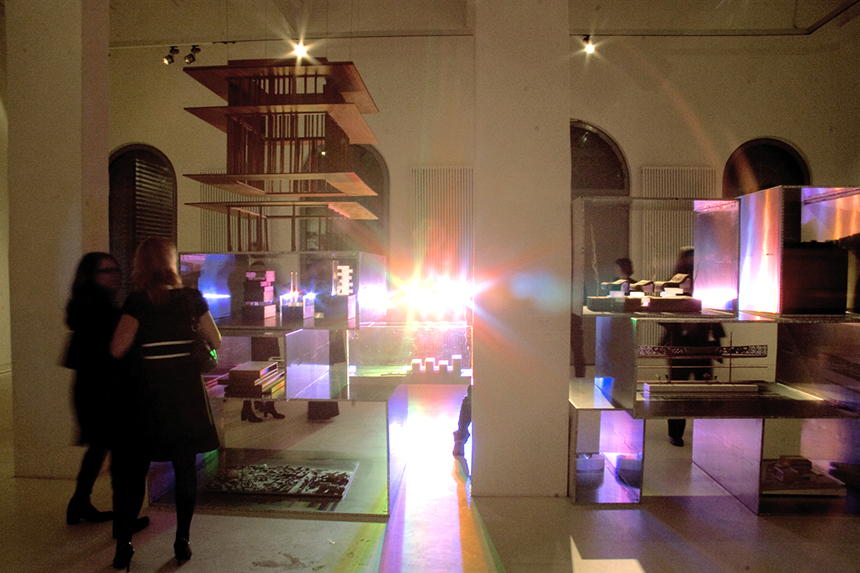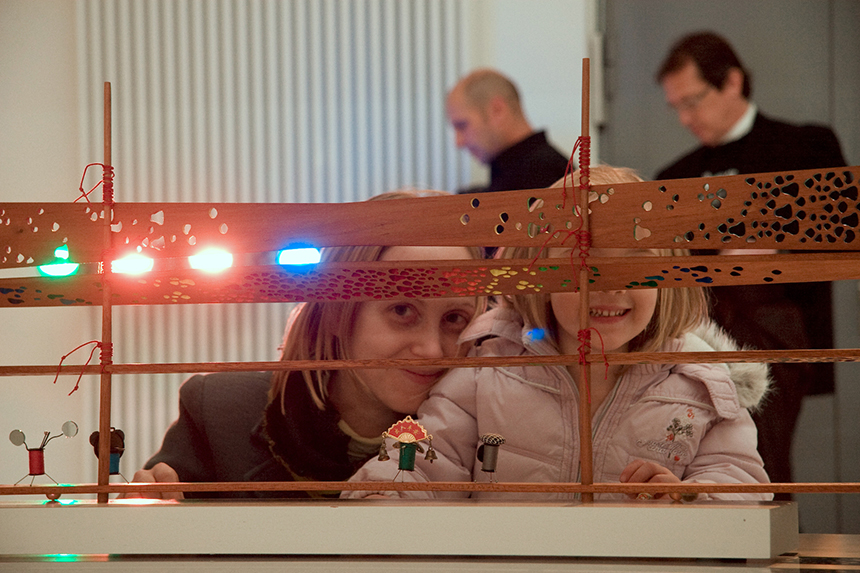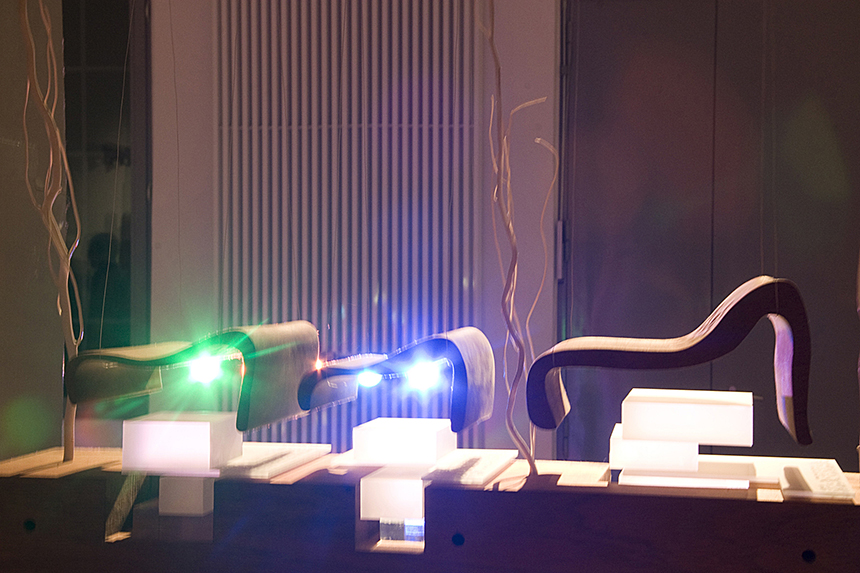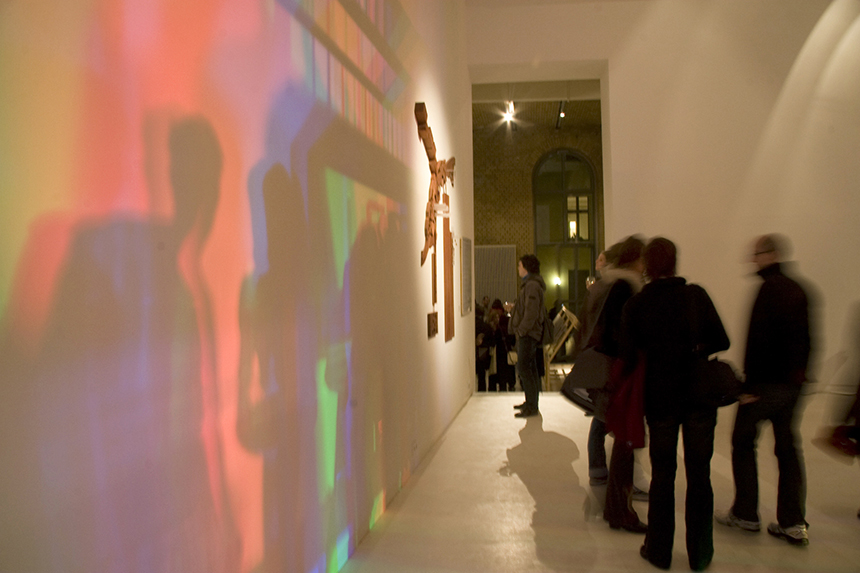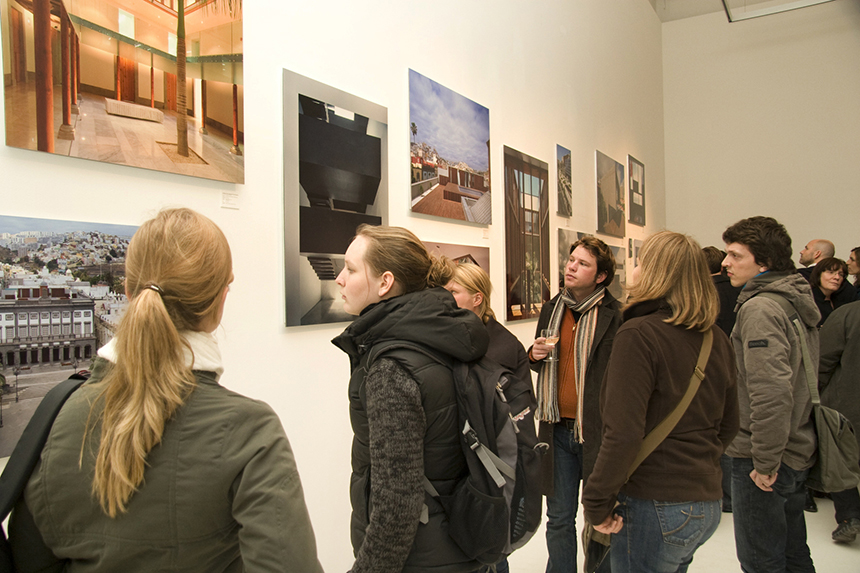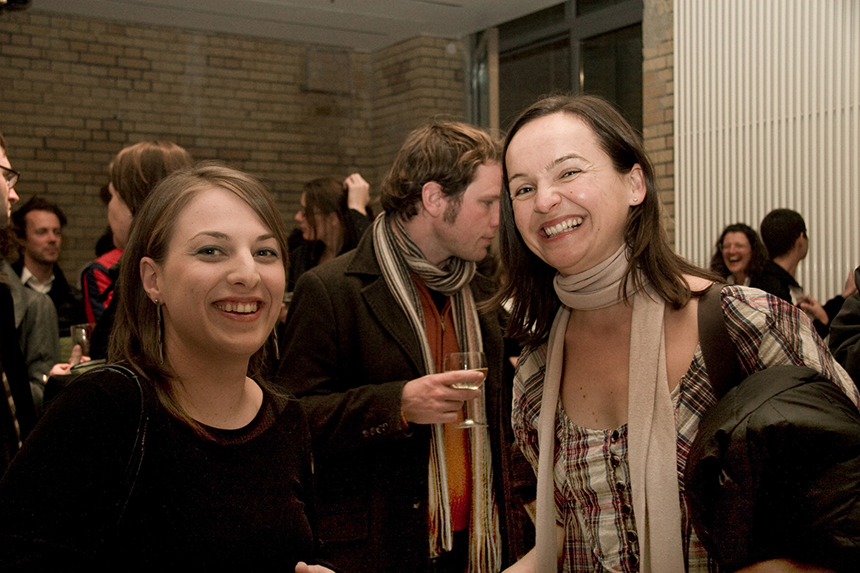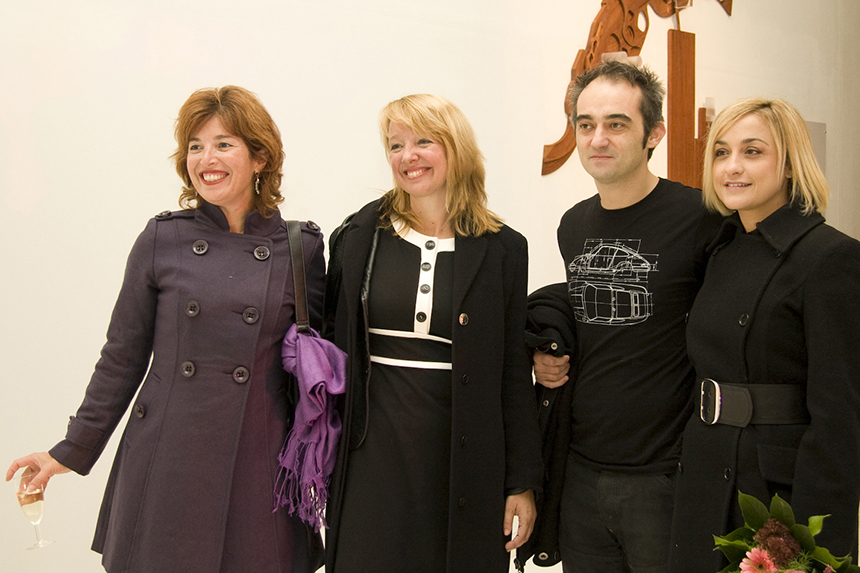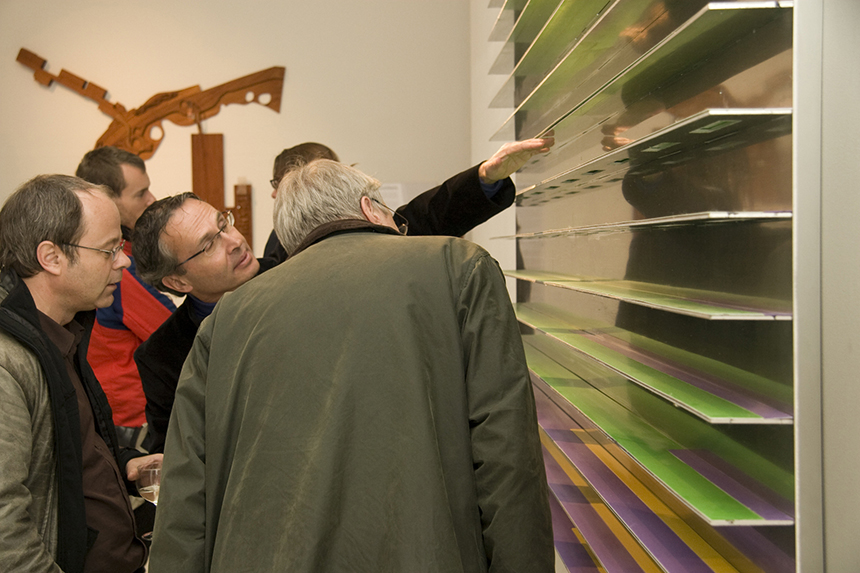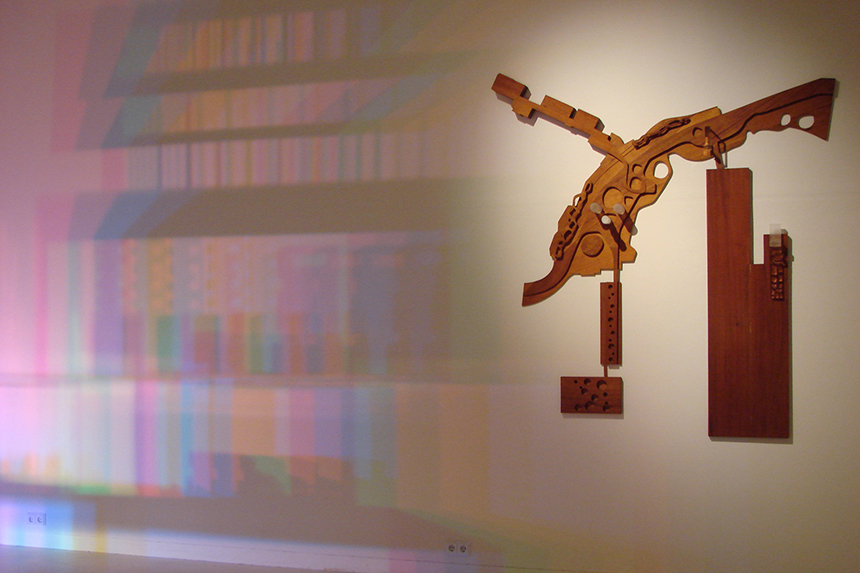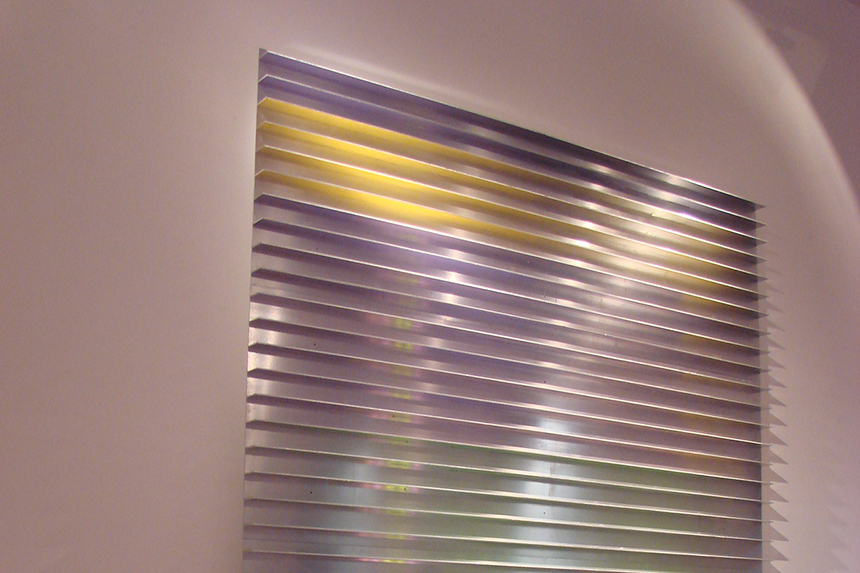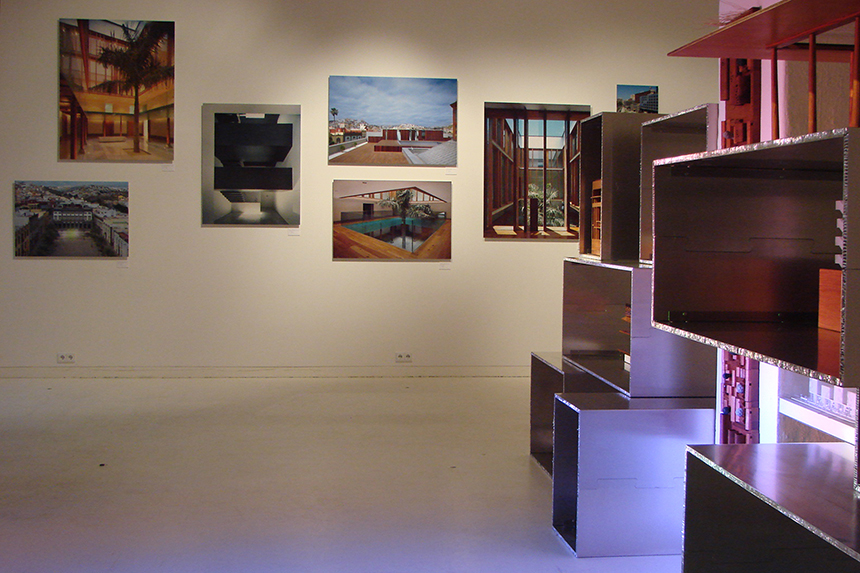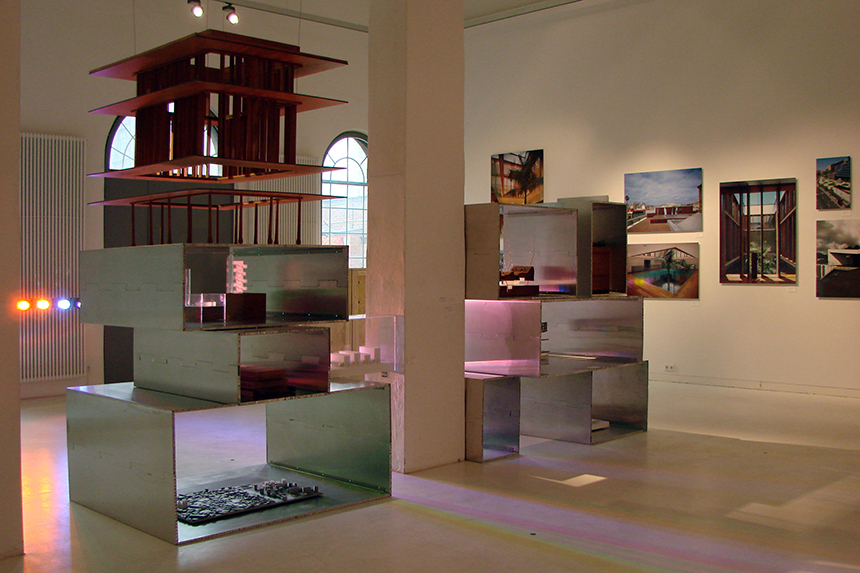nred architects is a very interesting partnership between two architecture studios, those of Magüi González and José Antonio Sosa, who are linked by their activities as teachers and their attitudes to theory. Tireless researchers, and educators conscious of the social importance of teaching, nred produce architecture with a clear commitment to its time, with a high degree of social and artistic content, and their joint work emerges from the interaction in a multifaceted laboratory of ideas of hands and minds in which specialization plays no part. The island of Gran Canaria, where the architects who make up nred have their respective offices, is a unique place, a world-scale model in which nature and artifice coexist in the powerful presence of the Atlantic Ocean — an open, multiple island that simultaneously calls for reflective attitudes and risk, where the architecture is expected not only to live with complexity but also to potentiate it; a region very much affected by construction, where the landscape is artificial, where the coast is a diversified world, and the city has developed into a metropolis, fragile and unstable, that demands attention and care.
This strange condition of metropolitan insularity, coupled with a unique sensitivity to the city and the territory, leads nred to deploy abstract mechanisms that enable them to explore an architecture that works fundamentally with the complexity of everyday life and the multiplicity of the urban landscape. There thus emerges a way of making architecture that is constructed on the basis of a relational logic, anchored in a dual vocation of analysis and practice, that derives from the partners’ theoretical positioning as teachers and architects.
It is precisely this theoretical, creative and intellectual positioning that underlies the need to work with different concepts which allow them to synthesize and intensify fields that are capable of constructing abstract instrumental groupings applicable to specific projects such as those featured in the exhibition at the Aedes Architecture Forum: La Regenta Centre for Artistic Production in Las Palmas (2005), the Law Courts complex in Las Palmas (2004), the Master Plan for the seafront of Puerto del Rosario (2005), the rehabilitation of the Casas Consistoriales (City Hall) in Las Palmas (1998), the Ruiz house in Las Palmas (2006), the Stretched house in Las Palmas (2007), and the proposal for New Xisi Bei Street in Beijing (2007). La Regenta is a project for a new centre for alternative art, constructed as a great stack of empty concrete boxes, which configure a series of exhibition areas whose height gives them an industrial character. For nred, stacking, superimposing and juxtaposing are forms of grouping with a non-hierarchical order, in which contiguity is more important than formal structure.
The Law Courts is a complex construct whose functioning is closer to that of a city than a building. The whole is articulated around a street glazed that acts as a natural extension of the urban space, making visible the movements of the people in the interior. Four large blocks of different heights configure an urban profile with a variable section that enacts strategies of coexistence with the neighbouring buildings. In this complex, the concept of the framework replaces closed formal structures with open relational structures. The framework of the project is a link between heterogeneous objects, establishing an open order with a permeable outline that serves to create unity and multiplicity.
In their project for the seafront of Puerto del Rosario, nred confront the challenge of sustainable growth in a city in contact with the sea, exploring the compatibility of a balanced extension of the port with the need to supply the city. Here again nred propose non-hierarchical open structures, which in this case operate on the basis of isotropic field organizations that champion the need for a precise definition of the setting, and are capable of generating a new relational landscape. The contour conditions of the operational structures established here are fundamental to the definition of the system itself. At the Casas Consistoriales the architects engaged in a reflection on the concept of recycling. In this project the aim was not to restore a building, but to embody the opportunity for a new use that would breathe new life into what was there; an interpretation centre parasitizes the municipal programme, revitalizing it by setting up an oscillation between contiguity and representativeness. For nred, recycling is more than restoring or rehabilitating, in that it implies starting a new life cycle on the basis of the old; for nred, to act in the field of recycling is to work with time present and time past, and recycling is a struggle against that time.
The struggle against time reappears in the beautiful Ruiz house, built in a popular neighbourhood of fishermen’s houses. This house helps define the boundary between the road above and the sea, closing itself off to the traffic by means of a potent blind wall and opening up to the sea with a great window with a fragmented composition. The house’s unfinished appearance is a mimetic response to the adjacent buildings. In the interior the old walls of successive earlier houses have been respected, recycling materials for the new use, reviving the space by means of memory. Entirely new-built, the Stretched house brings into play a strategy that was to some extent already apparent in previous projects: the exploiting of the potential inherent in the constraints, a kind of creative richness in which the need to solve a problem on the basis of the limitations leads to unexpected solutions. In this case the final formalization of the two buildings, on a plot with a privileged location thanks to its views of the bay and the port, is structured by the restrictions imposed by the conditions of the subsoil, most of which is deep landfill. The subsoil thus required that the pillars be located on the perimeter, with the rest of the building being developed in cantilever and appropriating the views. In other words, the subsoil conditioned the form of the house, making the structure expose its constructive raison d’être. If each of the projects outlined above essentializes differentiated abstract strategies, it is interesting to see how nred’s latest project, the proposal for Xisi Bei, is materialized through mechanisms it shares with its predecessors — strategies of recycling, contiguity, framework and boundary conditions. The proposed structure seeks to manifest the transformation of what once were rice fields into the present-day hutongs, the streets laid out on the old paths and the houses oriented like the crops. In the midst of existing buildings a series of open frameworks constructs flexible places for commerce, creation, culture, new uses that recycle and give a new vital pulse to the place. The volumes are ordered according to the geometric grid of the old rice paddies, in line with the field system, with a flexible geometry that adapts to the contour conditions of the existing layout. The roofs float over a carved ground, constructing a suggestive symbolic image of a nature that survives in memory.
Stacks, frameworks, contour conditions and recycling: these are strategies that overarch the projects in this interesting exhibition, and their verbalization makes present the unequivocal commitment of the nred architects to explore, by way of abstract mechanisms, an open, anti-monumental and non-hierarchical architecture, the reflection of a democratic society that seeks to do away with hierarchies and inequalities. And it is precisely here that this firm will to creative harmony with our time makes itself present — the architecture’s firm will to harmony with a diverse and multiple reality; a firm will to harmony that they make present in their vindication of ‘architecture as inevitable seismograph’, convinced of architecture’s ability to generate creative and social gains… convinced, finally, of architecture’s ability to improve the lives of people, city and territory.
Emilio Tuñón
Abstract Natures
nred architects
To abstract (from) nature is to reduce the number of its qualities in order to make visible the things that most interest us. We are not attracted to a real and all-inclusive expression of a forest, or of light, or of a mountain… this is an intellectual reduction toward mimesis; we are not interested in metaphor or analogy, but in the utilization and direct expression of certain invisible qualities of nature…
This exhibition is intended to be, as our work is, the product of personal obsessions that are grounded in ideas and concepts, which are fuelled in their turn by the construction of the work… Certain obsessions are a constant presence: the de-hierarchizing of forms, recycling and the environment, the choice of location, the flexibility of the frame as against the IDEA as a closed form… others derive from the nature of the place itself, the way the gaze determines which of all the existing parameters to make visible.
To abstract (from) nature is to reconstruct its totality so as to retain certain very specific aspects. Light is one of these; not only is it the instrument of vision, it is a configurer of spaces, an indicator of situations… In the exhibition, the light of a timeless sunset illuminates the room and constructs the projection of shadows on the three basic complementary colours of a deconstructed sun. This changeless sunset, which remains, is the abstraction of a stopped time. In turn, the deconstructed shadows of the objects, of the models, is their abstraction: reduced to pure outline.
Colour is the child of light. In the case of the façade of the Law Courts in Las Palmas or the enormous lattices of the Xisi Bei building in Beijing, the incidence of light throughout the day alters the colour and the perception of the building. We want to make evident this phenomenon that painters know so well. The objects not only show THEIR colour, but the colour of the things around them. The large model of one of the façades of the Law Courts changes with the position of the sun and the intensity of the light to reveal the changing essence of objects according to the light.
Architecture is generally subject to rules of composition. And one of its premises is that provided by the hierarchy and the closed order of ideas. We set out to engage with these rules: juxtaposing, superimposing, stacking… and let the objects establish free relationships with one another; organized but not hierarchized. The models, the boxes, the photos… included in the exhibition are organized by stacking, juxtaposition and depositing, as they would be by a collector, who does not look for a specific order and hierarchy among the objects, but wants to enjoy them simultaneously, and the freedom to permanently rewrite their position...
www.nred-arquitectos.eu
An Aedes catalogue was published.
With a text by Emilio Tuñón
ISBN 978-3-937093-98-7
German/English
Price € 10,-
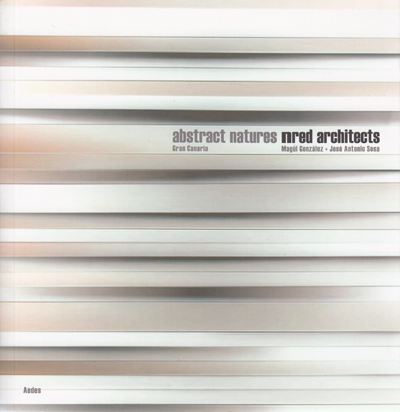
Diese Ausstellung wurde ermöglicht mit der großzügigen Unterstützung von:
